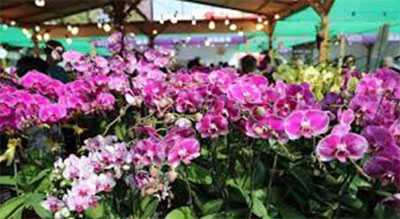By Prof. Athula Perera
The use of gene technology (DNA technology) is increasing rapidly throughout the world, producing genetically modified organisms (GMOs) and genetically ‘edited’ organisms. Genes are transferred across species and even kingdoms and edited to create almost anything we can dream of. Where are we in this modern environment? Probably just above ‘ground zero'. Now it is time to rise and grow, using modern technologies. It will help the struggling economy recover and improve the welfare of the people. In our biodiversity ‘hot spot,’ the possible applications of gene technology are many.

Pharmaceutical industry
We are blessed with two mountains of medicinal plants—Ritigala (including the ruins of a hospital with traditional herbal treatments) and Roomassala, the gift from Hanuman. We have not identified and cloned a single gene from these rich sources for pharmaceutical production. Traditional knowledge offers plenty of information about their uses.
Strategy: The Sri Lanka Institute of Biotechnology (SLIBTEC) and the Agricultural Biotechnology Centre of the University of Peradeniya should lead this important activity that can bring the country much-needed foreign exchange earnings. This can be an ideal opportunity for collaborating with the private sector.
Floriculture industry
There are hundreds of unutilised/unexploited wild flowering plants that can be modified through gene technology to produce miniature/dwarf products for export purposes. Every gene linked to flower production has been identified and cloned, making it possible to produce flowers of any colour, combination of colours, or size with necessary aromas and increased ‘vase life’.
Strategy: The Peradeniya Botanical Gardens, in collaboration with external experts, should prepare the action plan with partners from the private sector in another classic public-private partnership (PPP) activity.
Rubber industry/climate change
India has already produced a transgenic rubber plant resistant to cold environments by cloning and transferring the MnSOD gene, and hence the techniques involved are known and accessible.
Strategy: The Rubber Research Institute should link with relevant experts (including scientists from India), identify important traits (disease, insect resistance) that can be improved through this technology, and prepare the action plan.
This also opens up opportunities not only in rubber but also in any plant species to respond rapidly to expected climate change.
Validity of ownership by DNA fingerprinting
Our rich biodiversity, including traditional and Indigenous bio-materials, needs to be validated for legal ownership, which will also minimise biopiracy and biotheft.
Moreover, such validations using DNA fingerprinting techniques will help to maintain the highest standards of our globally respected exports, such as tea and cinnamon.
Strategy: Implement the establishment of National Genome Centres as recommended in the NASTEC (National Science and Technology Commission) policy.
Taking technology to the village (‘gamata thakshanaya’)
There are many instances where technology can be introduced to the villages to improve the quality of their products and create value-added products.
(i) In the dry zone, cattle and goat farmers can increase their incomes by activating the well-known bio-village concept. Milk collected from the farmers is stored at these bio-centres and used to produce value-added products such as butter, cheese, and yoghurt, using advanced techniques while also improving their quality for possible export. This is a centralised activity with the new technology being used in these centres and not by individual farmers. Financial gains through value addition should be shared with the farmers.
Strategy: Biocentres should link with experts in universities and other relevant institutes. Establish a marketing strategy.
(ii) Those living close to hospitals/medical centres that use traditional treatments can be assisted to grow the necessary medicinal plants in their home gardens as an additional income while also contributing to import substitution. The neighbouring university laboratories can produce such plantlets through tissue culture techniques and distribute them to the villagers to grow and sell them to those institutes.
Strategy: The relevant ministry should identify the sources and assist the university laboratories in producing tissue-cultured plantlets.
All such genetically modified products pose minimum risks to the environment, as there will be very low gene flow and negligible risks to human health, as they are not edible.
Moreover, with digital networking, we can establish e-tea, e-fishing, and e-tourism.
All of this can be achieved with a proper national plan with time targets and accountability identified in the plan and establishing biosafety regulations. We can then gradually rise from ‘ground zero’ to become a rich and beautiful country.
(The writer is an Emeritus Professor at the University of Peradeniya.)
Leave Comments